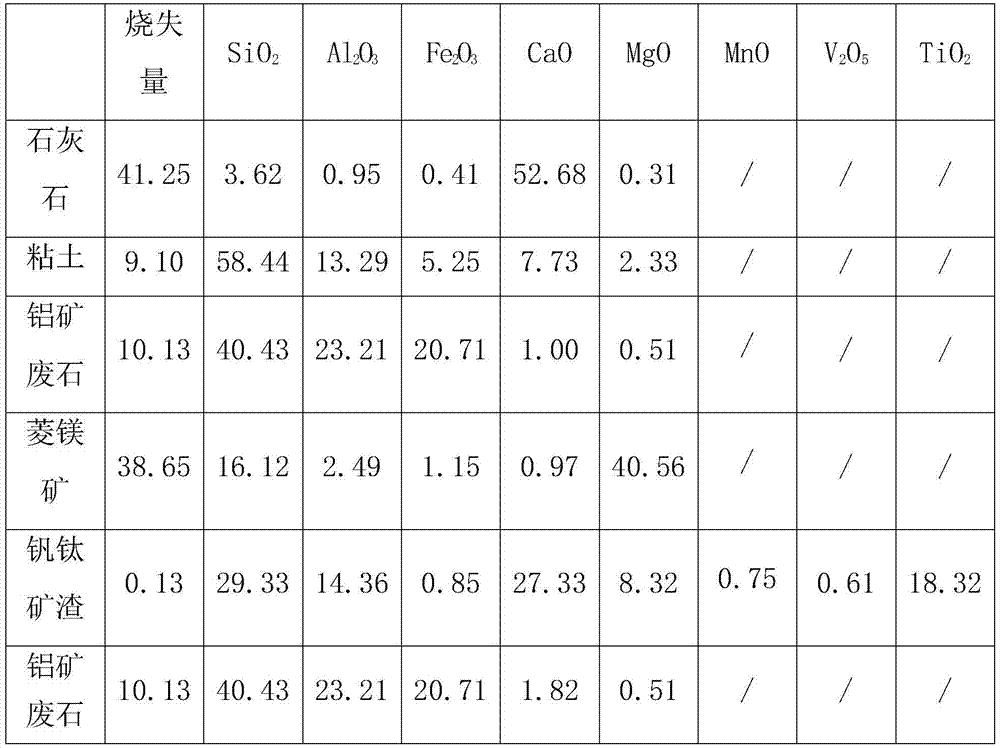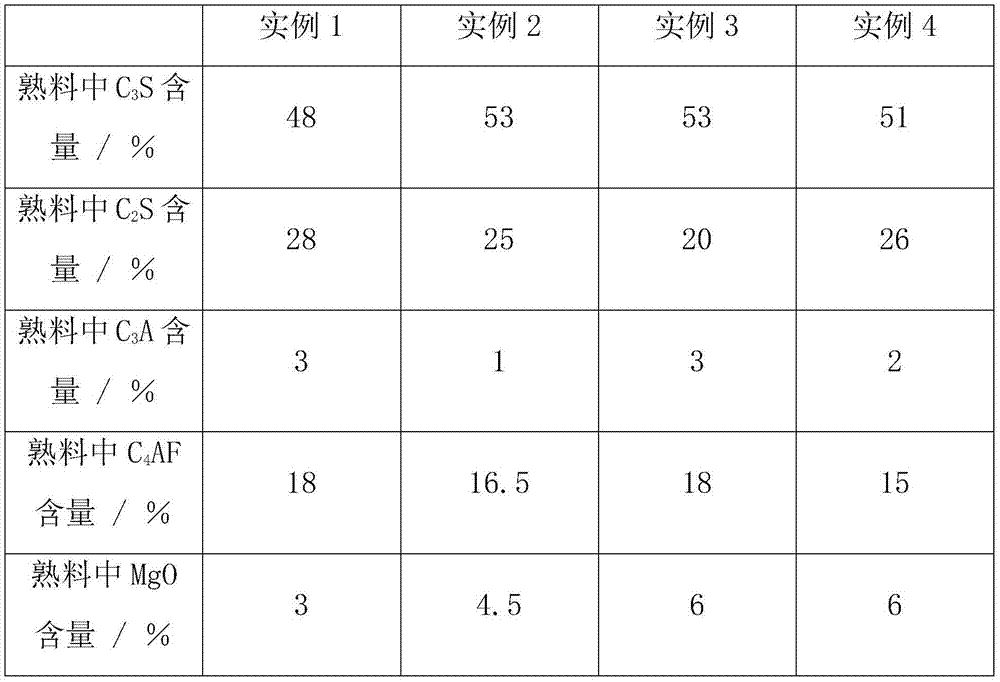Method for increasing content of periclase in high-magnesium moderate-heat cement clinker
A technology of cement clinker and high magnesium, which is applied in cement production and other directions, can solve the problems of unsatisfactory crack resistance of cement and limitation of free magnesium oxide content.
- Summary
- Abstract
- Description
- Claims
- Application Information
AI Technical Summary
Problems solved by technology
Method used
Image
Examples
Embodiment 1
[0032] According to the mineral composition of the cement clinker designed in Example 1 in Table 2, the chemical composition of the clinker is calculated, and the batching is carried out by the trial compounding method. The result of the batching is calculated in parts by weight, taking 85% of limestone and 2% of vanadium-titanium slag. The raw materials are 5% silica, 1% iron tailings and 10% magnesite. Put the above-mentioned raw materials together in an experimental ball mill and grind to a 80 μm square hole sieve with no more than 10% raw meal powder. The raw meal powder is mixed with a small amount of water and mixed uniformly and then pressed into a raw meal cake. After drying, it is preheated in a muffle furnace at 950°C for 30 minutes, and then moved into a high-temperature electric furnace at 1420°C for 60 minutes. After the calcination is finished, take it out and put it in the air and cool it to room temperature with an electric fan to obtain clinker.
[0033] Compare...
Embodiment 2
[0035] According to the mineral composition of the cement clinker designed in Example 1 in Table 2, the chemical composition of the clinker is calculated, and the batching is carried out by the trial compounding method. The result of the batching is in parts by weight, taking 60% limestone and 10% vanadium-titanium slag. 10% silica, 5% iron tailings, and 20% magnesite are raw materials. Put the above-mentioned raw materials together in an experimental ball mill and grind to a 75 μm square hole sieve with no more than 20% raw meal powder. Add a small amount of water to the raw meal powder, stir it evenly, and press it into a raw meal cake. After drying, it is preheated in a muffle furnace at 850°C for 20 minutes, and then moved into a high-temperature electric furnace at 1300°C for 20 minutes. After the calcination is finished, take it out and put it in the air and cool it to room temperature with an electric fan to obtain clinker.
[0036] Compared with using limestone, aluminum...
Embodiment 3
[0038] According to the mineral composition of the cement clinker designed in Example 1 in Table 2, the chemical composition of the clinker is calculated, and the batching is carried out by the trial compounding method. The result of the batching is in parts by weight, taking 70% limestone and 8% vanadium-titanium slag. The raw materials are 8% silica, 3% iron tailings and 15% magnesite. Put the above-mentioned raw materials together in an experimental ball mill and grind to a 85 μm square hole sieve with no more than 10% raw meal powder. Add a small amount of water to the raw meal powder and mix it evenly and press it into a raw meal cake. After drying, it is preheated in a muffle furnace at 1000°C for 50 minutes, and then moved to a high temperature electric furnace at 1500°C for 40 minutes. After the calcination is completed, take it out and put it in the air and cool it to room temperature with an electric fan to obtain clinker.
[0039] Compared with using limestone, alumin...
PUM
 Login to View More
Login to View More Abstract
Description
Claims
Application Information
 Login to View More
Login to View More - R&D
- Intellectual Property
- Life Sciences
- Materials
- Tech Scout
- Unparalleled Data Quality
- Higher Quality Content
- 60% Fewer Hallucinations
Browse by: Latest US Patents, China's latest patents, Technical Efficacy Thesaurus, Application Domain, Technology Topic, Popular Technical Reports.
© 2025 PatSnap. All rights reserved.Legal|Privacy policy|Modern Slavery Act Transparency Statement|Sitemap|About US| Contact US: help@patsnap.com


